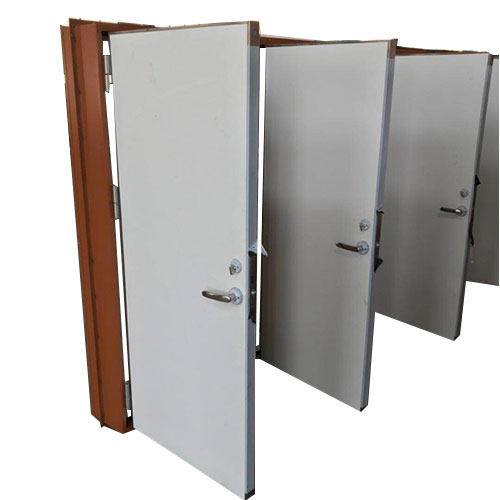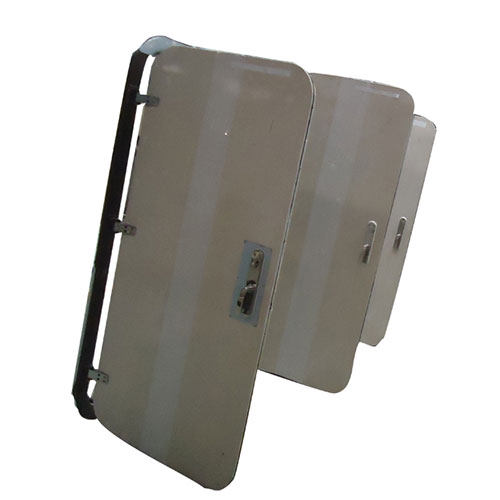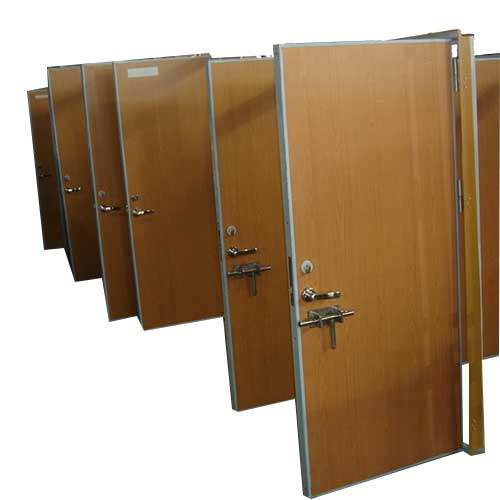What are Innovative Fire-resistant Materials Used in Marine Doors
In terms of maritime safety, marine doors play an important role in preventing and managing fires on ships. Advances in fire-resistant materials and technology have substantially improved the safety of marine doors, assuring crew members’ well-being and protecting important valuables. This article explores the latest innovations in fire-resistant materials utilized in the construction of marine doors.

Intumescent Coatings Applied to the Surface Treatment of Marine Doors
Intumescent coatings are one of the most significant advances in fire-resistant technology. These coatings are intended to expand when exposed to high temperatures, producing an insulating layer to protect the underlying material. In the context of marine doors, intumescent coatings are placed to door surfaces to give an extra layer of fire resistance.
Composite Materials Made of Marine Doors
Traditional materials like as steel have traditionally been the preferred choice for marine doors. However, recent advancements in composite materials have resulted in alternatives with higher fire-resistant qualities. Composite materials, which are generally a combination of fiberglass and other fire-retardant additives, offer a lightweight yet durable choice for maritime door construction.

Ceramic Fiber Technology Used for Marine Doors
Ceramic fibers are well-known for their excellent resilience to high temperatures. Ceramic fiber technology is used to make fire-resistant panels and insulation for naval doors. These panels not only survive high temperatures, but they also help to maintain the door’s structural integrity.
Fire-Resistant Glass Used in Marine Doors
Transparent fire-resistant materials have undergone remarkable advancements. Fire-resistant glass, which can endure high temperatures, provides visibility while protecting against flames and heat. This is particularly crucial for doors in areas where visibility is essential for safety and navigation.
Advanced Insulation Materials Made of Marine Doors
Enhanced insulation is an important aspect in fire prevention. Modern ship doors use superior insulation materials that resist fire while also acting as heat barriers. This helps to maintain compartmentalization on a ship, which is critical for limiting fires and guaranteeing crew member safety.
Sealing Systems and Gasket Technologies Contributing to the Overall Fire Resistance of Marine Doors
The effectiveness of a marine door’s fire resistance often relies on the integrity of its sealing system. Advanced gasket technologies, such as intumescent seals, form a tight seal that keeps smoke and flames out. These seals improve the overall fire protection and containment capabilities of maritime doors.

Testing and Certification Standards Evaluating the Performance of Marine Doors
Testing and certification requirements grow alongside technological advancements. Marine doors are thoroughly tested to guarantee they meet or surpass international safety standards. These tests evaluate the doors’ performance under simulated fire conditions, confirming their ability to withstand heat and maintain their integrity.
Nano-Coating Technologies Used for the Surface Treatment of Marine Doors
Nano-coating technologies were used to improve the fire resistance of marine door surfaces. These coatings form a nanoscale protective layer, increasing the fire resistance of the materials used in door construction.
Conclusion
The continuous evolution of fire-resistant materials and technologies has transformed the construction of marine doors, improving maritime safety. The use of intumescent coatings, composite materials, ceramic fiber technology, enhanced insulation, and sealing systems all help to create doors that can withstand the challenges posed by fire at sea. As ships become increasingly technologically advanced, the emphasis on safety through marine materials remains vital, safeguarding sailors’ well-being and protecting marine assets.


